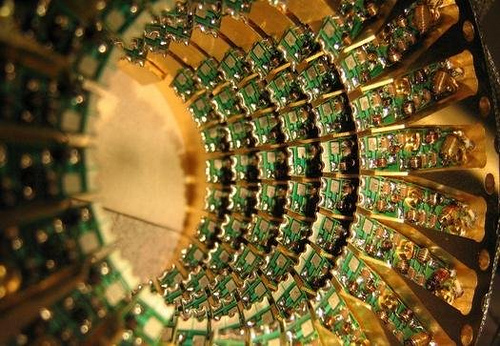Breakthrough removes major hurdle for quantum computing

Researchers announced that they've managed to predict and suppress environmental decoherence, a phenomenon that has been described as a "quantum bug" that destroys fundamental properties that quantum computers would rely on.
Decoherence is the tendency of atomic-scale particles to get quickly tangled up with the larger physical world we live in. Electrons, for instance, obey the laws of quantum physics and can therefore be in two places at once, like a coin simultaneously showing heads and tails. Scientists refer to this as state superposition. In contrast, larger, more complex physical systems appear to be in one consistent physical state because they interact and "entangle" with other objects in their environment and "decay" into a single state. The resultant decoherence is like a noise or interference that knocks the quantum particle, in this case the electron, out of superposition.
The realization of quantum computing's promise depends on switches that are capable of state superposition. Until now, all efforts to achieve such superposition with many molecules at once were blocked by decoherence.
By using high-magnetic fields, researchers at University of British Columbia and University of California Santa Barbara discovered a way to reduce the level of the noises in the surroundings so they can constrain the decoherence efficiently.
"For the first time we've been able to predict and control all the environmental decoherence mechanisms in a very complex system, in this case a large magnetic molecule called the 'Iron-8 molecule,'" said Phil Stamp, UBC professor of physics and astronomy and director of the Pacific Institute of Theoretical Physics. "Our theory also predicted that we could suppress the decoherence, and push the decoherence rate in the experiment to levels far below the threshold necessary for quantum information processing, by applying high magnetic fields."
The findings, which are published in today's edition of the journal Nature, could help pave the way for the development of quantum computers that perform complex calculations that are magnitudes greater than compared to today's traditional computers.
Sources & further reading:
Nature: Decoherence in crystals of quantum molecular magnets
USC: USC Scientists Contribute to a Breakthrough in Quantum Computing
UBC: Discovery may overcome obstacle for quantum computing: UBC, California researchers
